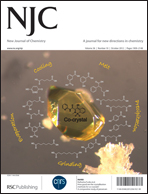Lithium–air and lithium–copper batteries based on a polymer stabilized interface between two immiscible electrolytic solutions (ITIES)
Abstract
We propose and demonstrate the direct application of immiscible aqueous/organic interfaces in lithium–air and lithium–copper batteries. Therefore, the two half-reactions are separated in their respectively favourable electrolytic environments without using any other membranes. In order to prevent


 Please wait while we load your content...
Please wait while we load your content...